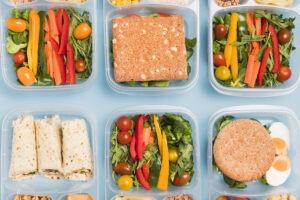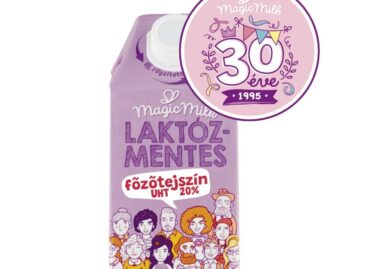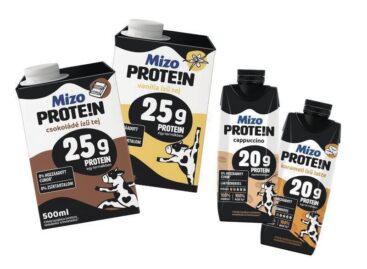Starting school with lactose-free delicacies
The new school year will soon begin, which in many cases also means stress for parents. In addition to the procurement of school supplies, accessories and solving logistics, the selection and packaging of varied and delicious snacks is a challenge every day. This is especially true if the children are lactose or milk protein sensitive, or if the family wants to increase the proportion of dairy-free foods in the diet. Brigitta Bakk, Rama’s dietitian, will now help you with some useful tips on how to prepare nutritious, tasty and dairy-free snacks or snacks for your children.
What is the difference between lactose intolerance and milk protein allergy?

Lactose sensitivity is often confused with milk protein allergy, even though they are two different intolerances. Lactose sensitivity, also known as lactose intolerance, develops when the level of the enzyme lactase, which is responsible for breaking down milk sugar, decreases in the body. As a result, this process takes place in the wrong place, i.e. in the large intestine, which can cause bloating and diarrhea. While it is necessary to completely avoid milk in the case of a milk protein allergy, it is sufficient for those with lactose intolerance to avoid products containing lactose or to use enzyme supplements. Lactose sensitivity can also develop in the teenage years, which is why it is even more important that the snacks packed for school follow these needs, for which fortunately we have many alternatives and simple practices at our disposal.
Let’s pay attention to calcium
When preparing snacks, it is also worth considering the nutritional benefits. Foods that have a high fiber content, such as whole-grain baked goods or vegetables, also have a beneficial effect on children’s digestion, thus supporting the proper functioning of the intestinal flora. If you reduce milk consumption, make sure to eat different plant-based options, such as milk, yogurt and cream alternatives, as well as other protein- and calcium-rich foods. When eating without food, it is especially important to ensure adequate protein intake, which can be achieved by combining different vegetable protein sources, such as tofu, legumes or quinoa. Let’s show our child as many of these options as possible, so he can choose his favorite based on his individual taste and sensitivity, which he will enjoy eating.
Related news
MAGIC MILK lactose free cooking crea, 20% 0,5 l
🎧 Hallgasd a cikket: Lejátszás Szünet Folytatás Leállítás Nyelv: Auto…
Read more >(HU) Mizo PROTE!N1 – Minden pillanatban benne vagyunk!
🎧 Hallgasd a cikket: Lejátszás Szünet Folytatás Leállítás Nyelv: Auto…
Read more >The start of school brought the second strongest week in the history of Kifli.hu
🎧 Hallgasd a cikket: Lejátszás Szünet Folytatás Leállítás Nyelv: Auto…
Read more >Related news
The New Year’s Eve fireworks fair is back: temporary sales will start in department store parking lots at the end of December
🎧 Hallgasd a cikket: Lejátszás Szünet Folytatás Leállítás Nyelv: Auto…
Read more >The first Eastern European non-alcoholic beer turns 50
🎧 Hallgasd a cikket: Lejátszás Szünet Folytatás Leállítás Nyelv: Auto…
Read more >Sausage: pork prices are already going down, but they won’t be cheaper in stores – a significant correction may come in the spring at the earliest
🎧 Hallgasd a cikket: Lejátszás Szünet Folytatás Leállítás Nyelv: Auto…
Read more >






